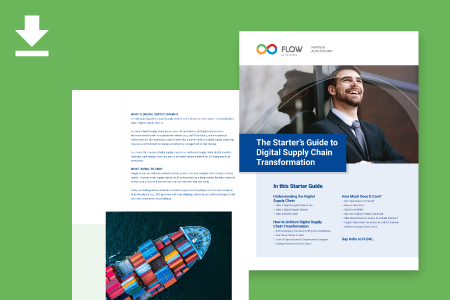September 29th, 2020
If one thing is certain in today’s retail landscape, effective supply chain management relies, in part, on effective change management—planning for change, managing change, and reinforcing change (from Prosci’s Research-Based Methodology). This sort of change management is necessary when working towards a connected supply chain, which can only be achieved when a well-oiled supplier enablement program is in place. After all, rapidly changing supply chain technology has completely transformed traditional day-to-day operations on both ends. Because of this, it’s not realistic to achieve a digitally enabled supply chain without providing adequate support to retail vendors and suppliers, many of which are small and mid-size businesses that aren’t yet capable of sending and/or receiving documents electronically.
What we’re saying is this: Supplier enablement is one of the great barriers of supply chain management, but it doesn’t have to be. Effective change management can help you to onboard your suppliers and vendors with ease, and you don’t necessarily have to do it all on your own.
Planning for Change
For retailers, working toward a connected supply chain most often begins with encouraging all suppliers and vendors to begin sending electronic invoices, or e-invoices—a first step in supply chain digitalization. If your organization, likewise, chooses to begin here, a supplier enablement program has to be defined before you can begin with the onboarding process.
In a perfect world, all your vendors and suppliers would jump at the chance to eliminate paper, reduce manual processes, improve communication, and cut costs with electronic invoicing. Truth is, many won’t see the need for change because the benefits just aren’t clear to them. And if they don’t see what’s in it for them, they won’t be motivated to adopt a new way of doing business, even if it requires minimal change on their end.
However, a thoughtful communication plan can go a long way, and a well thought out supplier enablement campaign will set the tone for a pleasant and successful supplier onboarding experience. One easy way to do this is to incorporate a clear overview of the benefits of electronic invoicing (e.g. faster payments) early on in your communication with suppliers.
Managing Change
Once appropriate messaging is in place, the next phase of change management is—wait for it—managing the change. The best way to go about this is to appoint a supplier onboarding specialist to the task. If you already have someone within your organization to take on this role, you’re one step ahead and will likely have a digitally enabled supply chain sooner rather than later. But if you don’t have a supplier onboarding specialist conveniently on hand, not to worry. You can always look outside of your organization to get the expertise you need.
While it may seem as though supplier enablement and supplier onboarding in retail are simply extensions of the usual tasks covered by supply chain management, it’s important to remember that it’s impossible to press pause on everyday responsibilities. That’s why it’s important to have a go-to supplier onboarding specialist who manages this change alongside day-to-day operations. The whole process will go a lot smoother if someone is always available to follow up with suppliers on a regular basis and track progress every step of the way.
Reinforcing Change
Even though a change management approach for supplier enablement will help to set the right expectations with your vendors and suppliers, it’s still unlikely that all of them will become digitally enabled and begin sending their invoices electronically as quickly as you’d like. That’s when it becomes time to reinforce the change, presenting yet another instance in which your supplier onboarding specialist comes in handy.
In order to be certain that your efforts to achieve a connected supply chain aren’t for nothing, a significant aspect of change management involves reinforcing the change. This means setting deadlines and applying a bit of pressure to vendors and suppliers that are less enthusiastic about complying with your new invoicing standard.




